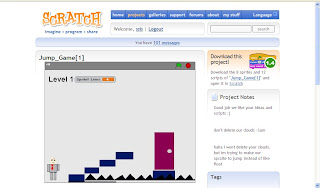Kevin asked this question after reading the challenges of the Scratch collaboration between my class and a class in Vietnam.
Why not do the collaboration within the class? Is there some reason you have to create all these barriers to collaboration (12-hour time zone changes, …)
I appreciate this direct question to the premise of this project. First of all here are some good reasons to collaborate from a previous comment on my blog, but they do not address why one should collaborate outside of an individual classroom.
I believe in exposing students to different points of view. Too often students live in their neighborhoods with people like themselves and do not have an open worldview. For example my district is less than one hour drive from Lake Michigan, yet I have students who have never been there. I value any opportunity to expand my students’ perceptions of the world, in particular about different cultures. Collaborative projects can help students experience. When students Skype with others different from themselves they learn about how they are similar.
Collaboration and learning from/about others is often relegated to social studies/language arts classrooms. Gary and I wanted to do it in a programming situation. I think our goals and ideas were correct. We just did not set up our students well by not giving them opportunities to build relationships first. We had the best intentions but skipped that part due to logistics and time.
So I believe collaborating outside of the classroom is important because:
- We do not live in a manufacturing based world anymore where kids live in the same small town with people who look just like themselves for their whole lives.
- Diversity is an important part of the global community, and we need to expose students to as many different kinds of cultures as possible.
- Collaboration allows students to see how they are the same as well as different from other cultures. The similarities can make as big of impression on them as the differences.
- I want to model that real learning is not limited to the classroom walls.
- Collaboration should build relationships between students.
I spent two years teaching English in China and studying Mandarin. I guess I have a strong personal belief in exposing oneself to different cultures and experiences. Many of my students may never have the opportunities to travel and experience new cultures firsthand. We have the technological tools to make these connections in the classroom. I believe that teachers have an obligation to use these tools to give students opportunities to collaborate and learn from as many sources as possible.

